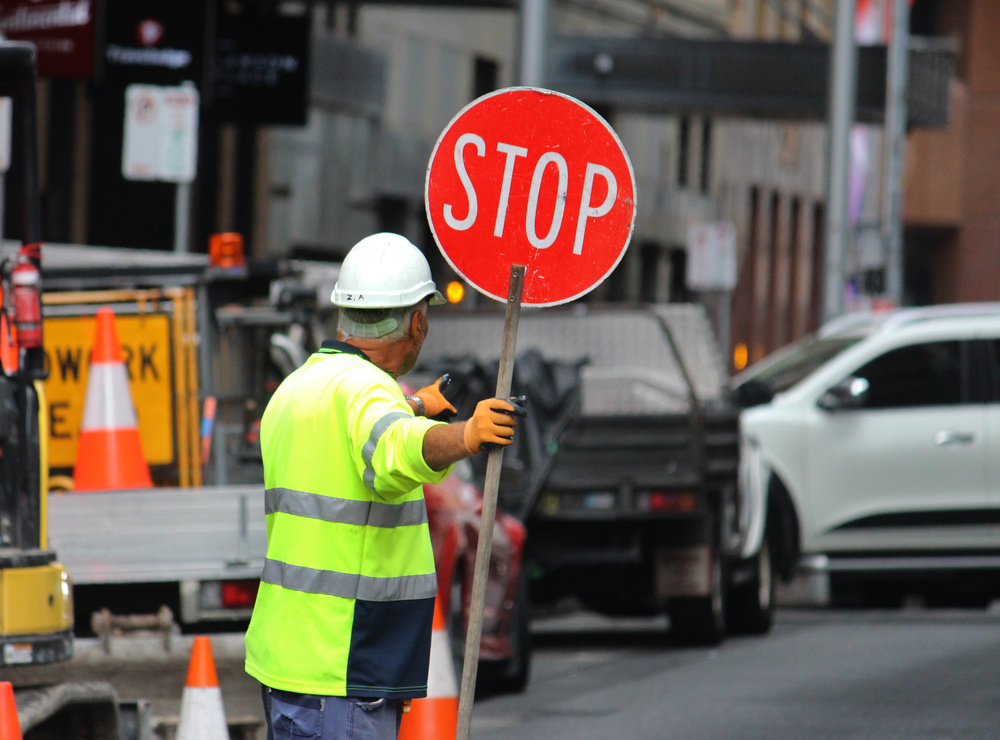Are you running a construction site? Do you see inefficiencies that result from traffic flow? These inefficiencies often surround vehicle and worker management on-site. What solution is available?
One effective way to manage traffic flow is by creating a traffic management plan. It’ll help you map out vehicle and pedestrian movements, ensuring they don’t overlap. How will you create this plan?
Here are some basics of the process:
Study Your Traffic Flow
The best way to plan for something is to understand it in detail. It’s a concept you want to adopt while creating a traffic management plan. The study will help you to pinpoint bottlenecks with traffic flow. This insight will help you develop your site’s ideal traffic management plan.
There are various ways to study traffic flow. The main one entails visually studying traffic flow on your site for several days, preferably a week. Observe vehicles, heavy machinery, and pedestrians’ traffic flow.
The other option is seeking expert services, specifically from a traffic management company Melbourne clients can rely on. They have the skills and tools to map out your ideal traffic plan.

Zone Your Worksite
Zoning entails dividing your site into sections, where only a given resource will operate in each. One zone can be entirely for pedestrians and another for delivery vehicles or heavy equipment.
Effective zoning prevents collisions between vehicles and pedestrians that lead to unproductivity. It’s likely the case where workers have to stop working to allow cars to pass.
The best way to zone your site is by using signage posts. They should touch on entry and exit points for pedestrians and vehicles, loading and off-loading zones, and speed limits, among others.
Learn About Any Regulations
Regulations aim to guide the public on how to run their daily operations. These also exist in traffic management in most, if not all, states. It’s best to learn them; they’ll guide your traffic management plan and make the process easier. You also don’t want to go against any laws.
Some of the aspects you’ll learn are the minimum standards, dos and don’ts, and the best practices of traffic management. Since these are regulations, ensure you adhere to them to the letter, even as you implement other practices.
Choose a Trusted Signage Supplier
For a successful traffic management plan, it’s crucial to invest in high-quality and reliable signage. ArtCraft, Australia’s trusted supplier of road signs and traffic management signs, offers a wide range of solutions that can help you effectively communicate designated zones and guidelines on your worksite. By choosing ArtCraft for your signage needs, you can ensure the safety and efficiency of your traffic management plan while adhering to regulations and best practices.
Train Your Workers
As management, you might have invested in a traffic management plan, hoping for its success. However, its success is highly dependent on your workers. If they don’t understand the plan, they can’t implement it or will do so with inefficiencies. Therefore, training your workforce is essential.
Start by informing them of the importance of a traffic management plan, highlighting how it’ll make their work easier. Next, take them through your plan, explaining all aspects in an easy-to-understand language. Where there are signposts, ensure they understand the meaning of each. It’d help to explain the plan’s details on-site instead of through theory only. It helps with their comprehension.
Besides training on the traffic management plan, it’s important to train and perfect your drivers’ driving skills. It’d help to train them through practicals with all the zoning in place.
Factor In Safety
Safety on a worksite is essential. Therefore, it should be part of your traffic management plan. Safety practices prevent accidents. However, should they happen, the extent of injuries reduces to the bare minimum.
One way of ensuring safety is using personal protective equipment (PPE). PPE, like a high visibility jacket, will ensure everybody is visible to everyone. A driver won’t drive their vehicle in the direction of a worker since he can see them quite well, thanks to the visibility jacket.
The other examples of PPE to invest in are safety shoes and industrial gloves for drivers. These types of PPE enhance drivers’ driving performance, preventing them from bumping into things. For instance, safety shoes have the right grip, ensuring a press on the brakes is effective.
Lighting is the other safety factor to consider. It’s essential since it ensures visibility on site, especially during bad weather or at night. Place them strategically, especially along the roads or routes on your site. In general, it prevents accidents.
Driver-aids are also an important addition to your site’s safety. They’ll help drivers navigate the vehicles accordingly, according to your traffic management plan. Also, the drivers don’t have to seek assistance from workers, for instance, when reversing.
Time workers spend away from working is time lost in productivity. These driver-aids include reversing alarms and mirrors. It’d help to work with your drivers in identifying the aids they need for easier, independent movement.

Conclusion
A well-crafted traffic management plan is essential for any worksite, especially when multiple resources are in play. By following the guidelines outlined above, you can create a comprehensive plan that will ensure an efficient and effective process.






